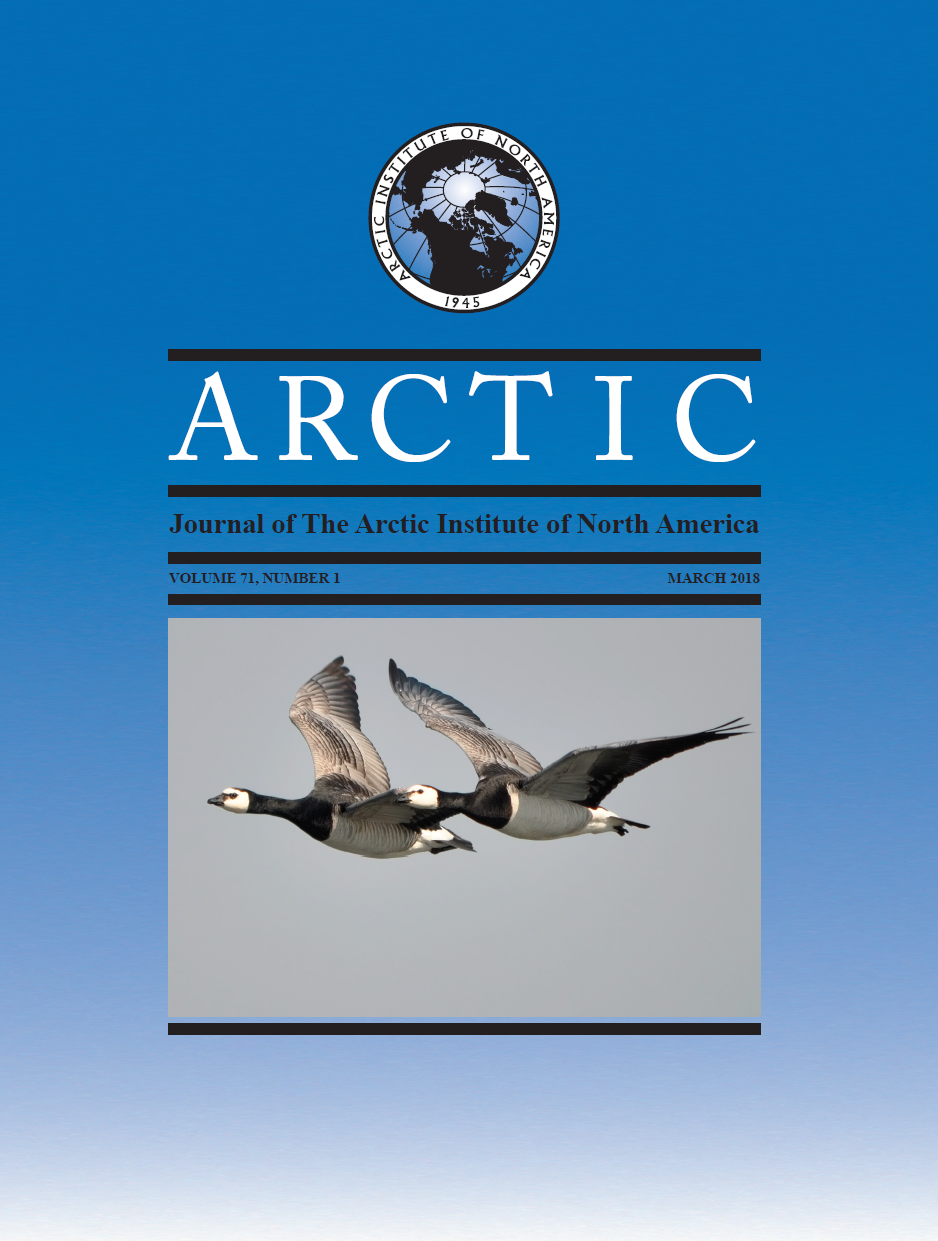Assessing Sea Ice Trafficability in a Changing Arctic
DOI:
https://doi.org/10.14430/arctic4701Ключевые слова:
sea ice, sea ice use, sea ice system services, ice roads, synthetic aperture radarАннотация
Arctic sea ice has undergone rapid changes during the last few decades, with negative implications for over-ice travel and on-ice operations, which benefit from services provided by the sea ice. A Parameter-based Trafficability Hierarchy (PATH) is presented here as a framework for developing quantitative assessment strategies that can guide planning and execution of operations on or near sea ice and quantify the impacts of recent changes on ice use. A PATH assessment has been completed for three case studies in Arctic Alaska. These cases, which correspond to a range of different icescapes and ice uses, identify and quantify different parameters linked to trafficability and safe operations. For ice road applications, PATH was used to determine an ice thickness compensation factor, a factor increasing the minimal thickness threshold for operations, to help translate sporadic auger ice thickness measurements along the Kotzebue–Kiana community ice road into an envelope for safe operations. A compensation factor as high as 1.5 was found to be necessary to ensure safety because of the high local thickness variability that is currently a concern for ice road operators. A PATH assessment of ice roughness for ice trail routing at Utqiaġvik draws on satellite remote sensing and is relevant for over-ice travel in general, including escape, evacuation, and rescue. We compared the routing of local snowmobile trails with Synthetic Aperture Radar (SAR) data products to identify specific ranges of ice conditions, roughness, and topography favored for ice trail construction. The same combination of data sources was used to identify potentially beneficial trail routes. Finally, an ice stability and safety assessment was completed for ice road construction and maintenance by industry near the Northstar Island oil production facility. We evaluated small-scale ice displacement data obtained from SAR interferometry to infer internal ice strain and stress and used these data in assessing the potential for fractures to reduce load-bearing capacity.


